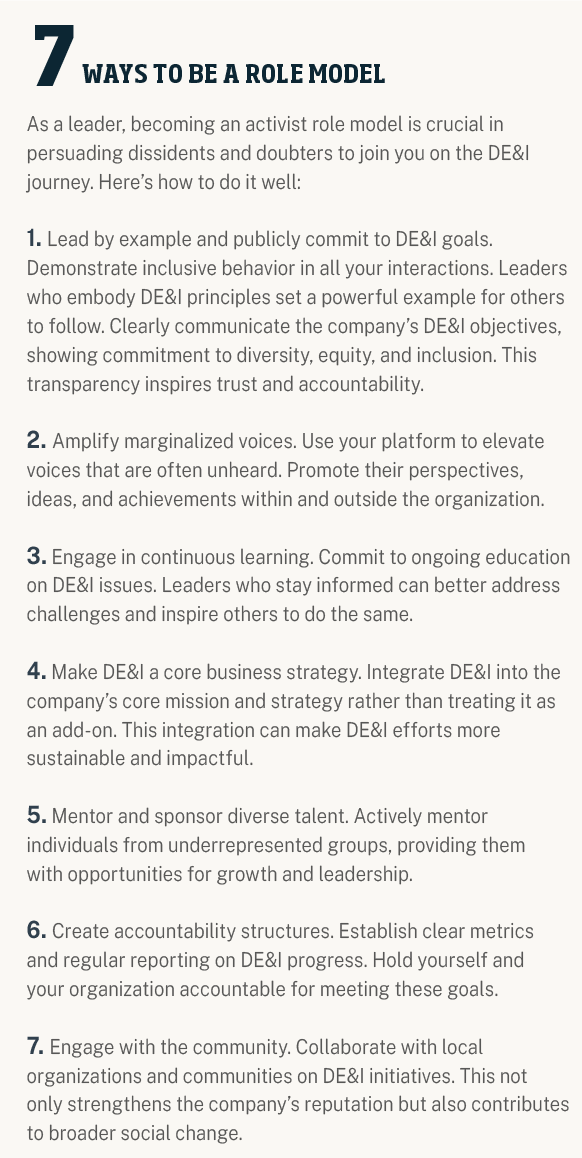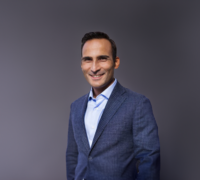
Fix the system, not the women
It’s time to debunk outdated myths around women lacking confidence and not asking for pay rises and focus on the real problem: societal misperceptions....

by Josefine van Zanten, Luca Condosta Published May 22, 2025 in Diversity, Equity, and Inclusion • 10 min read • 
The positive business impact of a joined-up, strategic approach to diversity, equity, and inclusion (DE&I) on decision-making, innovation, and performance is well documented. Research shows that hearing, integrating, and giving space to diverse perspectives and people leads to stronger analytical capabilities, better problem-solving abilities, and enhanced partner, stakeholder, and employee representation and engagement. This approach, in which inclusive environments and leadership styles are crucial prerequisites for diversity to thrive, can better equip organizations to face the challenges of a complex and polarized world.
The library of research that supports this position has grown rapidly over decades, leaving little doubt that adopting a credible DE&I strategy is not just doing the responsible thing from a societal or personal point of view but also from a business perspective. For example, Malgorzata and Stephen Smulowitz found that female board membership enhances stakeholder strategies and Jonathan Bauweraerts et al showed that family female directors have a positive impact on family-run SME innovation investments.
So why do DE&I strategies and initiatives still struggle to take hold in the workplace? From our collective decades of experience working in the field, we know that a big part of the battle is how to “take people with you”. All the research evidence, initiatives, and strategies in the world will never be enough if you cannot transform the culture of an organization and the attitudes of its people, particularly in-groups who might feel they have the most to lose. Organizations often find their incumbent workforce can be broken down into two groups that really make a difference on this journey: “allies/advocates” and “dissidents”.
From senior management to junior staff, allies can be counted on to speak up, set an example, and become standard bearers for DE&I initiatives, actively supporting the transformation to a diverse, equitable, and inclusive organization. Taking allies with you is rarely seen as an obstacle to progress, even if training or a guiding hand might be required. In our experience, the more fundamental – and difficult – task in implementing a successful DE&I strategy and reaping its benefits is to build trust with and persuade the majority of the in-group. These people doubt or question the value of DE&I or perhaps harbor reservations or opposition to the “official corporate line” based on cultural, personal, or religious grounds.
In this article, we will outline some steps to help you develop an impactful approach to DE&I, with practical advice on how to foster trust with the “dissidents”.

Consider how you might create safe spaces where all employees can express their views without fear of retaliation, offense, or ridicule.
Unfortunately, many organizations and leaders think that one-off events, alongside other standalone initiatives such as employee networks, are adequate measures to tick the DE&I box. While these activities can be appreciated by the workforce and create positive energy, they can feel peripheral to the core culture and strategy of the organization. At worst, they are token gestures. Such one-off initiatives do not lead to more diverse, equitable, and inclusive organizations. Our first insight is that DE&I must go well beyond standalone activities: bring DE&I into the core of every aspect of the business strategy and development, including its culture. To make sure DE&I is genuinely at the core of what your organization does, ask yourself:
Second, for organizations to inspire a cultural shift and to increase diversity through inclusion with the support of equitable systems, it is vital that a senior, credible, and impactful leader is responsible for the design and management of the DE&I strategy. This leader and their team must be supported with the right tools and processes to drive diverse talent development, position DE&I with the brand, oversee the implementation in the organizational culture, and so much more. Crucially, there also needs to be active sponsorship from the very top.
Finally, your DE&I strategy and any related initiative(s) must be delivered globally in an “on-message” way that reflects the organization’s values while being mindful of cultural and regional nuances. This can prove a tricky balance at times. We advise, however, that the organization’s guiding values and strategy must ultimately be embraced by all.

“DE&I is not something that can be boiled down to a few events each year or a couple of worthwhile initiatives ... it must ultimately be lived and breathed by all areas of your organization. ”
This last set of questions touches on a difficult but essential part of any DE&I journey: understanding how to navigate and overcome mistrust and resistance from in-groups and dissidents in your organization. These are, after all, the people you need to win over and take with you to become a truly diverse, equitable, and inclusive organization. They might be gatekeepers in positions of power or influence across the chain of management, or they could be individuals with strongly held personal beliefs in some of the regions (or countries) you operate in.
Based on our work in the field, we have identified two pathways that can help build trust with and effectively manage dissidents and resistance – and foster broad-based support for DE&I.
Responsible leadership in DE&I means recognizing that conflicting ideologies are only natural in diverse environments. By acknowledging these differences openly and transparently, rather than sweeping them under the carpet or dismissing them as “out of touch”, leaders can reduce tension in their teams and encourage healthy dialogue about sensitive issues. Consider how you might create safe spaces where all employees can express their views without fear of retaliation, offense, or ridicule. These opportunities for honest exchange help to build awareness, respect, and understanding, while offering a safety valve for people to express themselves. A more structured approach has seen organizations establish formal forums, such as voluntary employee resource groups (ERGs), for organized and respectful discussions on challenging topics.
To reinforce this environment of openness while doubling down on the DE&I imperative, leaders need to set the tone from the top by encouraging language and policies that emphasize collaboration and common goals, rather than highlighting divisions. For example, does your organization have clear policies that outline acceptable behavior and processes for addressing conflicts? This approach can help to create a culture of “allies for all”, where all team members can feel heard and respected – and part of the same dialogue and journey, even if their views differ.
In addition, leaders should make the case for the benefits of unity over division by celebrating and sharing examples of successful collaborations and projects involving diverse groups across the organization and/or companies in the same industry. This kind of storytelling shows that diversity creates a positive impact for the business through inclusion. This can, in turn, help to counter dissenting voices who might argue that diversity is being done “for its own sake” or to tick a public relations box. What about championing internal role models who have credibility within the business? These individuals could, for example, explain why some aspects of DE&I are not just a matter for our personal lives and inappropriate topics for the workplace – an argument often raised in opposition to DE&I policies. For example, addressing sexual orientation, do you know someone in your organization who might be willing to explain the costs of not “coming out”?

Overcoming dissidents, mistrust, and resistance from in-groups requires a stream of concerted bridge-building initiatives to nurture better understanding and appreciation of differences. For example, peer mentorship and reverse mentoring programs are powerful tools for driving change in DE&I, offering each party a window into another world. Why not try pairing individuals from different backgrounds to promote understanding and knowledge sharing?
Regular, structured DE&I training and workshops that focus on cultural competence, unconscious bias, and conflict resolution can effectively equip team members with the practical skills they need to understand and communicate with each other more effectively, learn more about their behaviors, and bridge divides.
Bridge-building also calls for greater accountability at leadership levels: leaders must be accountable for the delivery of DE&I strategies and set an example. Have you considered establishing clear, achievable DE&I goals for senior management, including metrics that feed into performance reviews? These goals and KPIs hold leaders accountable and ensure they are living the organization’s core values while actively building an inclusive workplace culture.
Anonymous feedback systems and surveys about DE&I topics can give employees a safe platform to hold leaders to account, express their concerns, make suggestions, and share experiences. This information helps to identify issues and areas for improvement.
Although they can often feel like the only areas some organizations invest in for DE&I, employee resource groups (ERGs) and diversity awareness events can, and should, play a role in the mix – if they form part of a cohesive, comprehensive strategy.
An ERG should provide support, networking, and advocacy for underrepresented groups and facilitate cross-group interaction in your organization. When establishing these groups, it is worth thinking about how to avoid the “silo effect” that can result in ERGs becoming irrelevant talking shops or echo chambers detached from the business. How do your ERGs relay their findings and ideas? What happens to those ideas? Are they tested and followed up at a senior level? Try focusing ERGs at intersections in the business to enable all groups to support each other in their aims, while feeding back into management with clear alignment. ERGs should be leveraged to enhance and increase talent acquisition among a greater diversity of candidates, especially in areas where there is a danger of a monoculture.
Events that celebrate cultural, religious, and social diversity at work can, for some, feel detached from business realities. However, if managed well, they can foster a sense of greater belonging and promote positive interactions between different groups. As part of a joined-up approach, they spotlight DE&I and show, at a public level, that your organization cares and is heading in a certain direction which everyone needs to get on board with.
If your organization is serious about becoming a role model in DE&I and reaping the rewards associated with it, then this ambition must be reflected from the top down through your values, mission, purpose, structures, HR policies, and corporate strategy. DE&I is not something that can be boiled down to a few events each year or a couple of worthwhile initiatives. It must ultimately be lived and breathed by all areas of your organization and embodied in the way the business functions and engages with its stakeholders.
This means designing and implementing a DE&I strategy that aligns with and is integrated across every aspect of the over-arching strategy of an organization, with the right policies, practices, and leadership behaviors to back it up. This inevitably requires finding effective ways to bring everyone – or the majority – along with you on the journey, not just DE&I allies or underrepresented groups, but the traditionally dominant in-groups and incumbent dissidents who can stand in the way of real change.
By acknowledging the views of the naysayers, increasing awareness of conflicts and differences of opinion, and implementing comprehensive and joined-up measures to build bridges and foster greater understanding, you can challenge the status quo and shape a more diverse, equitable, and inclusive business.

Global HR Executive
Josefine has been active as an international HR Executive for most of her career, working in Fortune 500 organizations. As a Senior Vice President, she was in charge of departments of D&I, culture change, and leadership and organizational development. Her experience spans various industries including HP (IT), Royal Dutch Shell (Oil and Gas), Royal DSM (Life Sciences and Chemicals), and Holcim (Construction). Until early 2024, she served as the Chief Diversity, Equity & Inclusion (DE&I) officer at IMD, working as a Senior Advisor, EI&D, with global organizations.

Head of Social Progress and Sustainability Capability building, LGBTQ+ Global Program
Luca Condosta is a transformational leader with a robust track record of driving change at the intersection of people, sustainability, and data. With a deep commitment to diversity, equity, and inclusion, his expertise spans over 20 years across multiple sectors, including telecommunications, oil and gas, and energy. He holds a PhD in business administration from Catholica University (Milan) with a focus on sustainability strategy, and master’s degrees in sustainable leadership, and business and climate change from Cambridge University. Luca was named on the 2024 Outstanding Role Model List that recognizes executives who paved the way for LGBTQ+ inclusion at work.

6 hours ago in Diversity, Equity, and Inclusion
It’s time to debunk outdated myths around women lacking confidence and not asking for pay rises and focus on the real problem: societal misperceptions....

6 hours ago • by Alexander Fleischmann in Diversity, Equity, and Inclusion
Inclusion net promoter score gives leaders an effective tool to get a clearer understanding of what needs to change....
 Audio available
Audio available
8 hours ago in Diversity, Equity, and Inclusion
Despite an increase in diversity policies and training offered by companies, organizations are still challenged to activate the topic of diversity and inclusion....

May 13, 2025 • by Luca Condosta in Diversity, Equity, and Inclusion
The CDO, formerly a figurehead for regulatory compliance, is now a key driver of company strategy. Luca Condosta describes the essential skills that CDOs require to turn DE&I concepts into actual commercial...